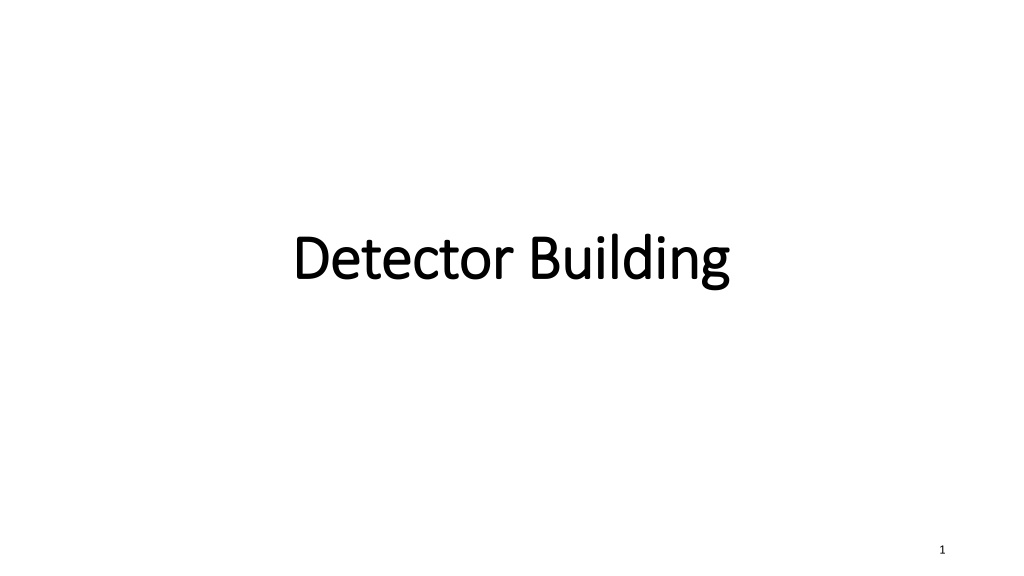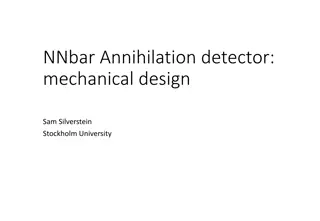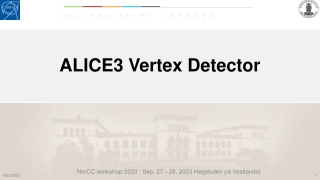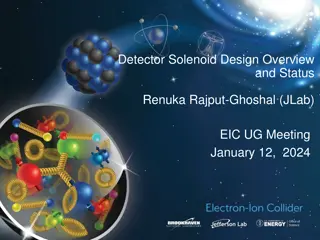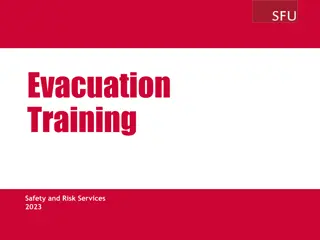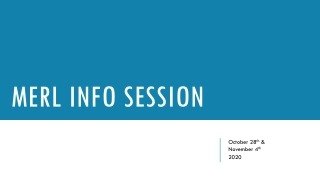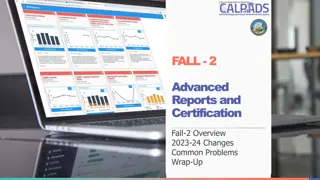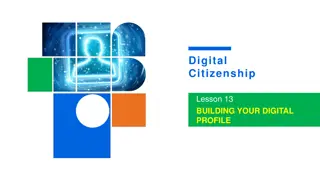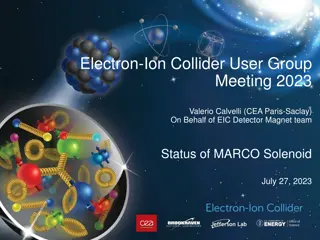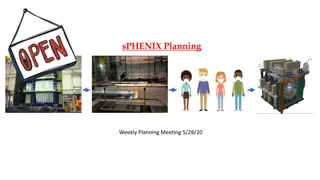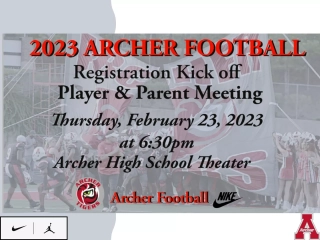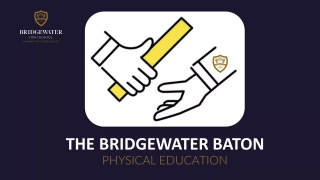Detector Building
Teams will construct a durable Oxidation Reduction Potential (ORP) probe to measure voltage and NaCl concentrations in water samples. Participants will complete a written test on the event's principles and theories. The competition involves building the device using microcontrollers, sensors, and displays, with specific construction parameters to follow. The probes must accurately measure salt concentrations and display results digitally. Event parameters outline the testing process, including unknown concentration samples. Construction violations and specifications are detailed. Overall, this event challenges teams to design, build, and program a probe for water quality analysis.
Download Presentation
Please find below an Image/Link to download the presentation.
The content on the website is provided AS IS for your information and personal use only. It may not be sold, licensed, or shared on other websites without obtaining consent from the author. Download presentation by click this link. If you encounter any issues during the download, it is possible that the publisher has removed the file from their server.
Presentation Transcript
Detector Building Detector Building 1
DESCRIPTION: Teams will build a durable Oxidation Reduction Potential (ORP) or Redox Probe that will accurately measure and display both voltage and the concentrations of NaCl in parts per million from 0 to 5000 ppm of different water samples and complete a written test on the principles and theories behind the event A TEAM OF UP TO: 2 EYE PROTECTION: C IMPOUND: No APPROXIMATE TIME: 50 minutes 2
EVENT PARAMETERS: a) For each team, one participant-constructed ORP or Redox probe with a laptop or a calculator for programming/display; two calculators of any type; and one 2 or smaller three-ring binder containing information in any form and from any source. Sheet protectors, lamination, tabs and labels are permitted. b) Event Supervisors will supply distilled or ROI water for participants to rinse the probes between tests, and will provide two (2) standardized saltwater samples from 0 to 5000 ppm in 4 oz souffle cups with approximately 7 cm mouth with approximate depth of 5 cm with a removable lid. c) Regional competition will test 3 unknown concentrations. State and National Competition will test 4 different concentrations. d) Teams must be able to answer questions regarding the design, construction, programming, and operation of the Device per the Building Policy found at www.soinc.org. 3
CONSTRUCTION PARAMETERS: Devices must be built using a microcontroller or microcontroller board (e.g., TI Innovator, Raspberry Pi, Arduino, Micro:bit), a display, LED lights, and a participant-built sensor/probe. The sensor must produce a voltage which varies according to the concentration of the salt solution. The Device may be connected to a laptop and/or calculator. Wi-Fi/Internet connection is not allowed at any time during competition. The sensor must be student constructed with a salt bridge from fundamental electronic components such as resistors, capacitors, DIP package integrated circuits, op-amps, transistors, relays, surface mount adaptor boards, wire, glass or plastic, and an internal standard solution. All supporting circuits must be assembled on a breadboard. This includes solderable breadboards and perfboards. SOIC that do not contain additional electronic components are allowed. salt bridge 4
Example of a pH response measurement apparatus with pH sensor and salt bridge. 5
The following are construction violations: a. preassembled devices, b. printed circuit boards (except digital display boards), c. integrated circuit daughterboards. The sensor and wires/cables together; must be a minimum of 30.0 cm in length and narrow enough to fit through an opening of 7 cm. The end must be immersible up to 5.0 cm in water. The Device may use any code libraries for calibration of the device. The Device must have a digital display that clearly shows voltage, and salt concentrations in ppmto the nearest unit value. 6
The Device must be able to indicate the specific concentration range zone using three separate LEDs: one red, one green, and one blue. RGB LEDs may be used but must be wired for only one color. The exact concentration range of each zone will not be revealed until teams enter to compete and may be different for different rotations. At States/Nationals, zones may require more than one color to be displayed at the same time. o Teams must not use electrical outlets at any time during the competition. If the Device is not powered by a connected laptop or calculator, then the Device must be powered by commercially available batteries. o Multiple batteries may be connected in series or parallel as long as the total input voltage does not exceed 12 volts as calculated using each battery s voltage (as labeled by the manufacturer). Teams with devices using a total input voltage exceeding 12 volts or devices that the Event Supervisor deems unsafe will not participate in Device Testing. 7
DESIGN LOG_Components: 1) A top-down photograph, diagram, or picture of the Device with the school name labeled on the device, labels identifying all the components and detailing their functions. This section should also include a brief summary explaining how the Device was constructed. 2) A data table with at least 10 trials showing the raw sensor reading (voltage, time, etc.) versus the corresponding ppm. If multiple fixed resistors are tried, include the data and graphs of all potential resistors. 3) Scatter-plot graph of this data with concentration in ppm on the Y-axis and voltage on the X-axis. 4) Function graph of the mathematical model supported by the data overlaid on a scatter-plot of the data. 5) Equation of the above the mathematical model used to convert measured voltage to the corresponding concentration in ppm highlighted for easy identification. 6) Printout of the program with its code highlighted showing this exact mathematical equation or its 7) code implementation converting the raw sensor reading (voltage, time, etc.) to ppm. 8) On the same program printout, highlight the code that will illuminate the appropriate LED(s) 9) according to their assigned concentration range(s). A front cover labeled with the Team Name and the Team Number for the current tournament. 8
DESIGN LOG: If a 3-D printer, laser cutter, CNC machine or similar device was used as a tool to build the team s device, or any component thereof, the following information must also be supplied in the log. Any such parts purchased as an end item or as part of a kit do NOT require this information. o Information about the tool hardware, software, materials, and supplies used; o Details of the source of any digital files (e.g., CAD, STL, OBJ) utilized by the tool including but not limited to when and where the file was obtained, including the web address if downloaded from the internet; o Descriptions of how the team constructed the final device from the tool created components; o All numerical values should be labeled with standard units (e.g., SI or English) appropriate to the dimension being measured. SI units should be the default standard. e. All logs will be returned to teams after inspection. 9
Part I: Device Testing 1) Only participants and Event Supervisors are allowed in the competition areas. Once participants enter the event area, they must not leave or receive outside assistance, materials, or communication. 2) Event Supervisors will provide the labeled samples of unknown concentration (three (3) at Regional/ Invitational Tournaments, and four (4) at State/National Tournaments) that teams will need to measure. 3) Teams may modify their code (e.g., alter the LED code to match the posted concentration ranges during the setup time. 4) At all Tournaments, teams will have 5 minutes to set up their Device, verify their Device with known samples provided by the Event Supervisor and modify their code. After this time no other changes to the device are allowed. 5) After the setup/calibration time, the teams will measure the unknown concentration samples. Teams will have 1 minute to measure each sample. The Event Supervisor will note if a voltage is being displayed, and then record the concentration in ppm to the nearest 1 ppm as displayed by the Device, along with the LED color displayed for each concentration. 6) The Event Supervisor will review with teams the data recorded on their scoresheet. 7) Teams who wish to file an appeal regarding Part I must leave their Design Log and Device in the competition area. 11
Unless otherwise requested, answers must be in metric units with appropriate significant figures. While working on the written test teams are not allowed to use any laptops they may have brought with them. Part II: Written Test The written test topics: 1) Voltage dividers and the effect of different fixed resistors and the output voltage recorded; 2) ORPs and their operation; 3) The environmental significance of chloride concentrations; 4) The half reactions; 5) The effect of temperature on concentration; 6) Standard Cell Potentials; 7) Converting between concentration units; 8) The conversion from analog reading to voltage; 9) Theory of LEDs, working principles, and applications; 10)The process of calibration - working with raw data and determining real world relationships; 11)Operational knowledge of basic device components. 12)Topics for State and National Tournaments only:Nernst Equations 12
SCORING: 1) The team with the highest Total Score wins. 2) Total Score = Build Score + Written Test Score + Design Log Score 3) Build Score: There will be three unknown concentrations at Regionals (Maximum 57 points) and four unknown concentrations at States/Nationals (Maximum 76 points) a) Accuracy Score for each concentration = 15 pts - (relative error of the concentration measurement x multiplier) but will not go below 0 pts. i. Regional Multiplier = 20 ii. State Multiplier = 30 iii. National Multiplier = 40 iv. Teams not able to produce a reading will receive an accuracy score of 0 for that concentration. b) LED Score for each Concentration = 4 pts awarded for the correct LED color (as determined by the concentration displayed by the Device. c) Teams that violate rules 3.a-b. will have the Build Score multiplied by 0.6 for each violation. d) Teams that violate rules 3.c-d. will have the Build Score multiplied by 0.8 for each violation. e) Teams that did not participate in Device Testing will receive a Build Score of 0. 13
SCORING: 4) Written Test Score = (raw score / highest score achieved by teams) x 50 pts (Maximum 50 points); 5) Design Log Score (Maximum 32 points): Points for the Design Log will be awarded or deducted as follows: a) Four (4) points are awarded for each completed section of the Design Log specified in 4.b.i-viii. as well as being able to answer questions about each section. b) Points are deducted from the Design Log Score as follows: i. If any digital manufacturing techniques were used as part of the build by the team as described in 4.c. four (4) points will be deducted for each section of 4.c. that was not addressed or is incomplete (Maximum 12 point penalty). ii. One (1) point may be deducted for each section specified in 4.b.ii.-vii. where appropriate units were not provided with numerical values (Maximum 4 point penalty). 6) Teams that violate any rule under THE COMPETITION will have the Total Score multiplied by 0.9. g. 7) Tiebreakers: a) Highest Build Score b) Highest Written Test Score c) Selected questions on the Written Test. 14
Recommended Resources: The Science Olympiad Store (store.soinc.org) carries a variety of resources to purchase for this event; other resources are on the Event Pages at soinc.org 15
